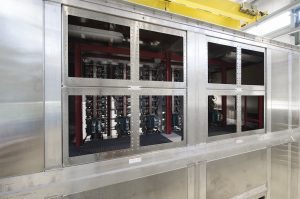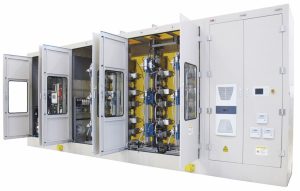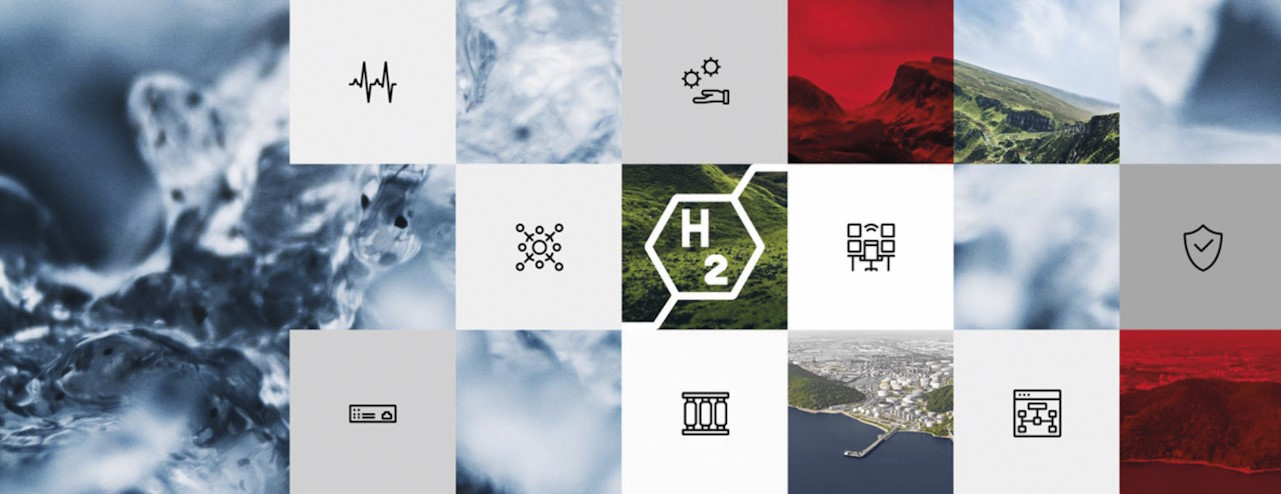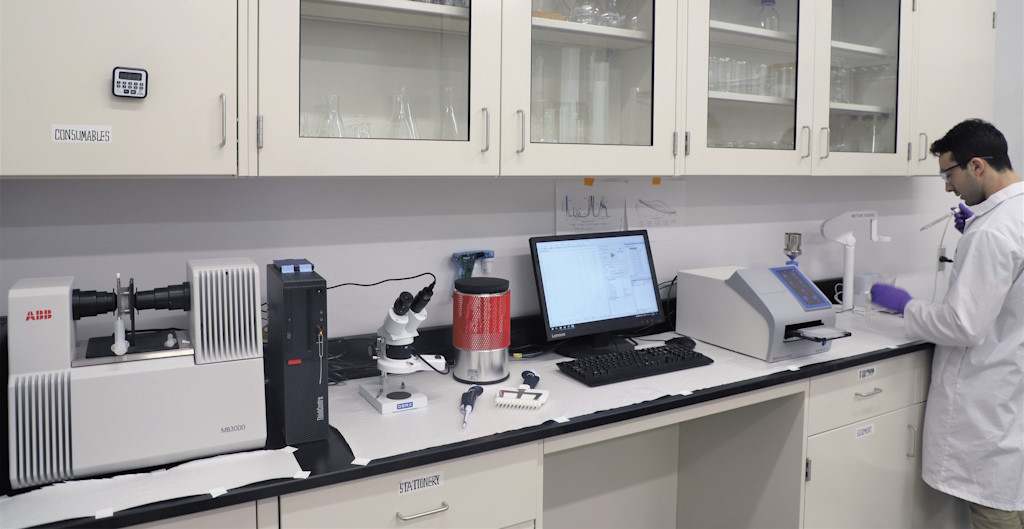Hydrogen is used in a range of applications, from the manufacture of chemical products to an energy source for transportation and as a fuel for heavy industries.
By Ralph Burgener, Business Unit Manager, High Power Rectifiers, ABB Process Industries
The concept of green hydrogen is not new, but despite being the most abundant element in the universe, hydrogen has only been used in science, engineering and technology in its gaseous H2 form since the 18th century. As a constituent part of water, there would be no oceans and therefore no life on Earth without it. Fast forward, and it is being used in a range of industries for the manufacture of chemical products, including methanol and ammonia, the energy source for transportation and the fuel for heavy industries.
Almost all hydrogen used in industry today is synthetic, manufactured through water electrolysis, which we’ll address in this article, or steam-methane reforming. The technologies available to do this have, until recently, relied on fossil-fuel-derived electricity. However, significant inroads have been made to produce green hydrogen, which is created by splitting water into hydrogen (H2) and oxygen (O2). For it to take the name ‘green’ it must use an electric current that comes from renewable energy sources, such as wind, solar or hydro.
In light of the drive towards a fossil-free future that aligns with the current global energy transition, and all consumer, government and industry association targets, companies are taking renewed notice of green hydrogen. It is growing and will continue to grow long-term as technologies and infrastructure come into play that can make the most of it. A host of industries will use it to decarbonise their manufacturing processes, including steel and cement. In addition, the growing battery and energy storage industries will benefit.
Overall, there is a chance to make significant gains in industries with green hydrogen, but those companies at the forefront cannot reduce their emissions alone. More can be expected from global technology leaders like ABB, who have highly complementary technologies already installed at customer sites or are available to be packaged and engineered to suit specific outcomes. It takes automation, electrification, and digital solutions to ensure that the likes of cement and steel can be produced in leaner and cleaner ways.
Evolving electrolysers

The industries mentioned so far, cement and steel, can be expanded to include mobility: trucks, buses, railways and ships. But we will focus on the former two, which together contribute more than 15 percent of global greenhouse gas emissions annually, according to a range of sources including Climate Group. There are long-term ambitions for these industries to be fully decarbonised, but this is no mean feat, particularly in the face of the current geopolitical environment and supply chain bottlenecks seen globally. Some companies are indeed rolling back mega projects that were intended to bring green hydrogen to markets fast. However, the technologies that exist today will be crucial to help meet 2030, 2035 and 2050 targets, and dovetail with incoming technologies.
Where we do see progress today is in the development of electrolyser technologies, an evolution that will be a springboard to commercial green hydrogen production at scale, potentially transported between continents and used in the biggest carbon emissions emitting industries. Infrastructure is required everywhere, from the Americas and Europe to the Middle East and Africa, Asia and Australia. But existing heavy industries are already familiar with using some of the equipment and modular energy carrier and storage systems. There is talk at our company about technologies and components including electrical control and protection to assure grid connection, motors to power pumps and compressors to handle the storage of hydrogen, and sensors to monitor and measure parameters such as flow pressure and temperature. For the purposes of illustration, the focus here will be on two technology areas that are fundamental today and will evolve alongside electrolysers: rectifiers used to convert the electricity from the grid’s AC to the DC, providing a stable power flow required for electrolysis; and automation systems to control and coordinate the operation of the plant.
Finding the power
The process of electrolysis uses electrical current to split molecules of water, extracting hydrogen and oxygen separately as gases. An electrolysis cell requires an electrical supply at a given DC voltage. The grid typically supplies electricity at a higher AC voltage. The installation that assures the electrical conversion is called the rectifier system, a technology that our company has been involved with for more than 100 years. They are designed for safe and reliable operation, sometimes under harsh industrial conditions.

Sources, including DNV’s Hydrogen Forecast to 2050, explain that electrolysis will be the dominant form of hydrogen production by the middle of the century with 3,100 gigawatts of installed capacity – more than double the total installed generation capacity of solar and wind combined today. The big players are making technological progress by aligning existing high power rectifiers (HPR) with innovations in electrolysis.
The biggest example of this comes with Hydrogen Optimized (HOI) in Canada.
They are leveraging their capabilities and resources to rapidly commercialise their patented RuggedCell™ high-power water electrolysis technology for the world’s largest green hydrogen plants. RuggedCell™ technology converts renewable electricity such as hydro, solar and wind power into green hydrogen for industry. Such collaboration is advancing the commercial availability and feasibility of large-scale green hydrogen systems.
HPR is a highly modular and scalable technology and can provide power in the upper ranges required for modern electrolysis — between 5,000A and 550,000A with nearly unlimited current and voltage combinations to meet plant-specific requirements. It is designed to provide maximum availability and the highest levels of productivity with personnel site safety as a priority.
End-use applications using the green hydrogen produced in this way will include zero-emission transportation, fuel and fertilizer supply, ammonia and other chemical production with non-fossil sources of hydrogen. Crucially, the intention is to use this hydrogen as a reducing agent in iron ore reduction, known as a low-carbon alternative to traditional carbon-intensive methods such as coking coal.
Hydrogen is today being used in cement production as well. In most installations it is implemented as a booster fuel to increase the use of alternative fuels. Alternative fuels, in contrast to coal or other fossil fuel types, have a varying calorific content so to compensate for that at least one constant calorific fuel is needed. This has traditionally been fossil-based but is beginning to be replaced with hydrogen, if the cost is deemed reasonable.
Controlling and optimising the operation
Automation has been in play for many decades, with companies having long used distributed control systems (DCS). These systems, which incorporate process-specific control functionality, have become essential to the operations of some of the largest and most significant customer plants, including in steelmaking and cement manufacturing. They have been the brains, heart and lungs of industrial facilities, replacing the uncertainty and inconsistency of some manual tasks, and enabling operators to take the best decisions based on information and data insights coming from the system.
Today, the likes of ABB’s Ability™ System 800xA® DCS supports operations to not only maintain and remain stable but also to grow and evolve. While productivity, efficiency, quality, safety and cost remain fundamental to customer businesses, technology systems must also bring innovation and increased levels of competitive advantage. Sustainability, electrification and digitalisation will remain critical to the future of all process industries, so the automation and control systems of the future must be ready.
In 2025, there is energy in the hydrogen space, with partners collaborating to bring electrification and automation concepts to reality. By combining the best of our platforms and expertise with some third-party proprietary solutions and customer systems, we can look further into the practical realities of producing green hydrogen through water electrolysis. This aligns with market sentiment, including from the IEA’s Global Hydrogen Review 2024, which states the electrolyser sector requires an annual growth rate of 90 per cent annually to 2030 just to meet projected demand.
The space is both competitive and under development – the R&D and collaboration requirements are high because the rewards for all will be great, shaping how we live and work. At ABB, we believe in the power of working together because no individual or company has all the answers. For our part, we are bringing high-power electrification options, alongside power management and automation solutions, to the table. By investigating and studying technologies that exist in the market today, we can combine solutions and make the process faster. This work will gain momentum and make improvements and expansions in the green hydrogen products space. We are looking forward to continuing to find solutions for large-scale, low-cost green hydrogen production.
Balancing the future
When it comes to the future of industry, hydrogen will be part of the mix, and green hydrogen in particular, when it comes to the most environmentally sustainable ways of carrying out operations. With its only byproduct being residual water and oxygen, its impacts could be far-reaching in terms of greenhouse gas reduction in steelmaking and cement manufacturing, and in the myriad other uses. For workers and communities connected to plants, it will also mean cleaner air and better health, as well as job creation potential.
For major technology players, it is clear that there will need to be a balance, but we are pushing for progress in terms of bringing forward investment decisions, collaborating with original equipment manufacturing partners and industry companies, and maintaining a focus on the long-term outcomes that will be commercially viable. Only through technology will we be able to bring the costs of green hydrogen production and sale down and see it become as normal as using other more conventional fuel sources.
References
- The Steel and Concrete Transformation -2024 market outlook on lower emission steel and concrete.pdf
- Hydrogen Forecast to 2050
- Global Hydrogen Review 2024 –Analysis – IEA
About the author

Ralph Burgener is Business Unit Manager for High Power Rectifiers (HPR) within the ABB Process Industries division. He has more than 20-years of career experience in ABB, with leadership responsibility for the HPR technologies and the expert engineers in his team. Together, they provide integrated products, services and solutions to help customers optimize their power and productivity resulting in increased availability, lower lifetime investment costs and reach their sustainability targets . ABB’s HPR sets the global industrial standard for high power rectifier solutions and services in the market. They can be deployed for a range of industries, including aluminium, steel and hydrogen. Increasingly, they are a key technology in sustainability, lower emissions and fossil-free materials production. A trained electrical engineer by trade, Ralph is an alumnus of the University of Sion, Switzerland. He is based in the Zurich area of Switzerland.
About this Technical Story
This Technical Story is an article from our Valve World Magazine, June 2025 issue. To read other featured stories and many more articles, subscribe to our print magazine. Available in both print and digital formats. DIGITAL MAGAZINE SUBSCRIPTIONS ARE NOW FREE.
“Every week we share a new Technical Story with our Valve World community. Join us and let’s share your Featured Story on Valve World online and in print.”



